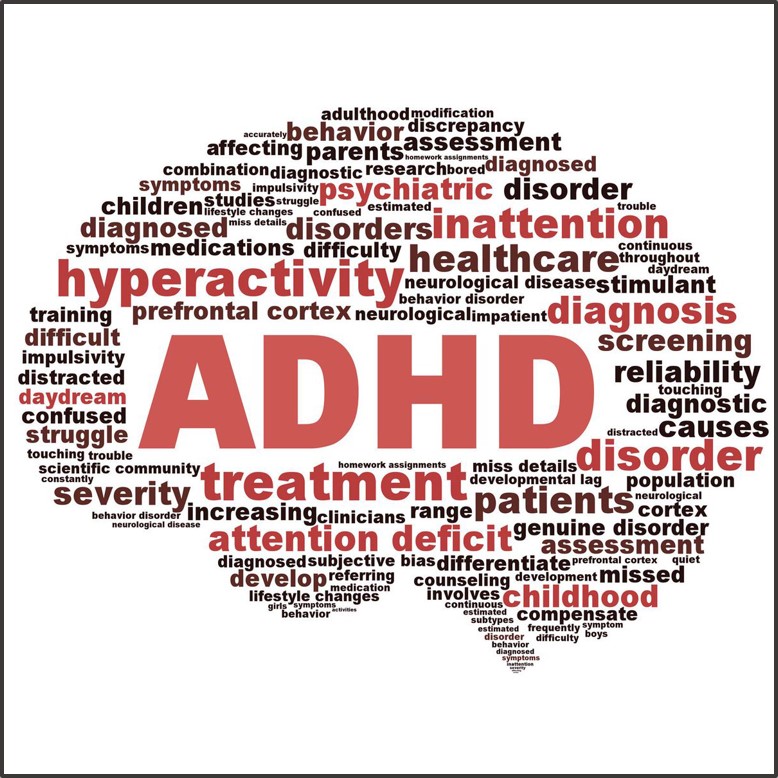
1) Definition
The letters ADHD is short for Attention Deficit Hyperactivity Disorder. ADHD is defined as a neurodevelopmental disorder which means a disorder is related to disturbed development of certain brain functions with a typical onset in childhood. However, adults may have similar symptoms and can also be diagnosed with this disorder. The characteristic symptoms of ADHD are hyperactivity, inattention and impulsivity (ADD is an older name of the same disorder, and is now replaced by ADHD).
2) Description
ADHD is defined according to a set of characteristic symptoms, which include core symptoms related to hyperactivity, inattention and impulsivity. These are dimensional traits, meaning that they can be observed at various levels in all humans. Importantly, to qualify for an ADHD diagnosis, these traits or symptoms are extreme in such a way that they interfere with and impair a person’s daily life; at school, at work or in social settings. Diagnostic criteria are important tools to classify which disorder an individual exhibits trait similar to. However, a diagnosis does not capture the essence of a whole individual [1].
A practical value of diagnostic terms is the ability to facilitate communication among clinicians and researchers. The World Health Organization is responsible for the International Classification of Disease (ICD), which is the diagnostic classification standard for all clinical and research purposes. This also includes psychiatric disorders. However, in the United States and many other nations the American Psychiatric Association’s Diagnostic and Statistical Manual (DSM-5) is used for clinical and research purposes.
For more information on these diagnostic criteria see the Centers for Disease Control and Prevention site for ADHD: https://www.cdc.gov/ncbddd/adhd/diagnosis.html or https://www.who.int/classifications/icd/en/
ADHD is found in all countries and affects about 5% of children and is seen in about 2.5% of adults. Among children, more boys than girls are diagnosed with ADHD, while this gender difference is not seen among adults. Why this is the case is not yet fully understood. ADHD has a strong hereditary factor, meaning there is a genetic contribution behind the disorder [2].
The causes behind ADHD are complex and remains elusive. In the Eat2beNICE project (https://newbrainnutrition.com/) one of the tasks our research team focuses on is disentangling the influence of diet and lifestyle across the lifespan on ADHD. We are investigating whether regular physical exercise or specific diets or nutrients can reduce ADHD symptoms, in addition to regular treatment.
The diets that we investigate are:
- the Mediterranean diet
- elimination diet
- probiotics
- vitamin-mineral supplements
To learn more about how diet and lifestyle may influence ADHD, see these blogs:
- Dietary treatments for ADHD
- Probiotics and ADHD
- Micronutrient supplements and ADHD
- Physical exercise and ADHD
- The Gut microbiome and ADHD
Stay tuned at www.newbrainnutrition.com to follow the project!





